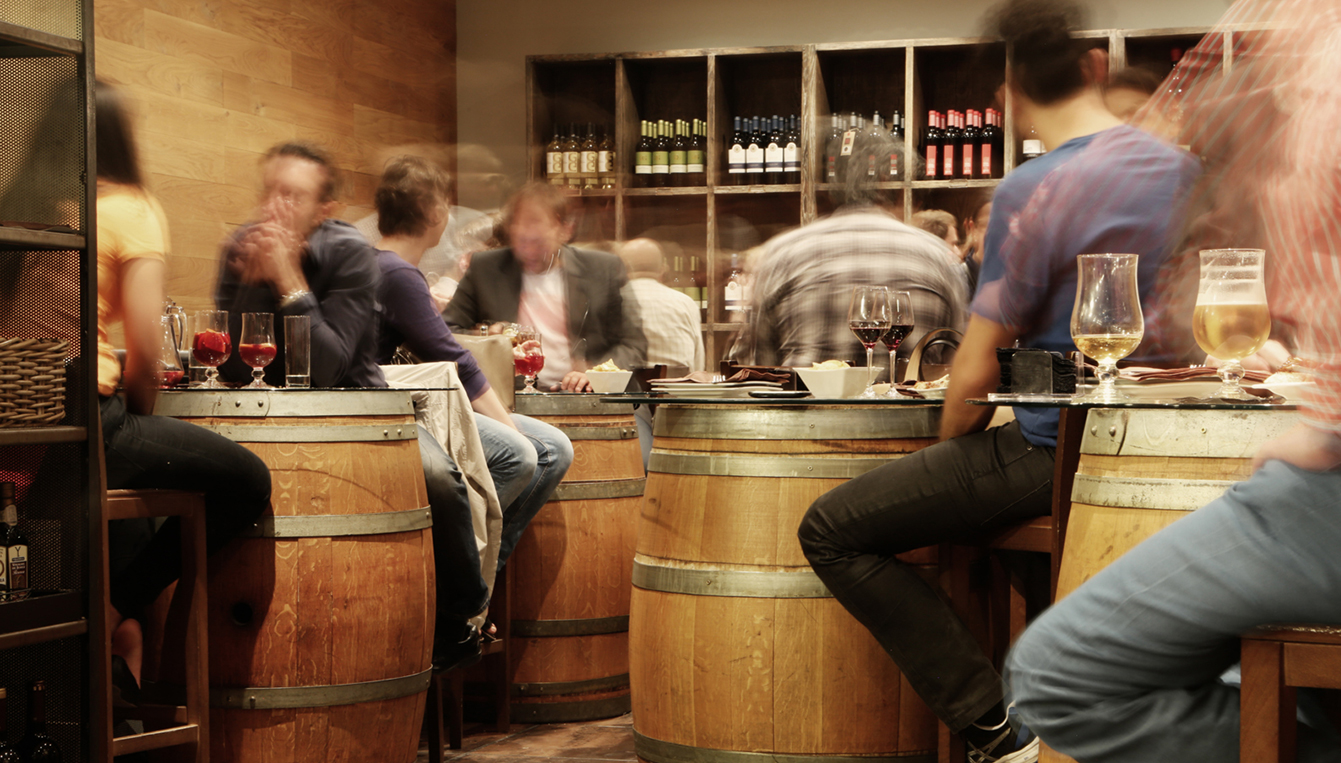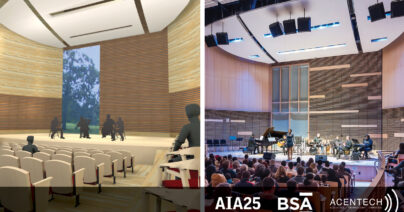A.) Pull out your favorite smartphone app, and start frantically flipping through reviews
B.) Put your nose up to the window menu, squinting while trying to make sense of whimsical monikers for artisan-crafted dishes
C.) You already knew the perfect place since you’ve read up on every gourmet spot within 5 square miles, only to find out there is a 2-hour minimum wait
D.) You pick the busiest restaurant that can seat you quickly, blindly trusting that the local patrons can’t be (all) wrong.
If you’re like me, you may have already done some combination of A, B & C, and by the time you hit option D you and your friend are faced with a conundrum –you’re so hungry that you’re ready to step into any raucous affair that’s willing to seat you, even if means being packed like sardines in a room forged by the voices of alcohol-fueled young professionals unwinding, spiced up a notch through the Lombard effect, and simmered to a nice 95+ dB within the cauldron of dimly lit bare walls, faux-antique wood/metal trim, and full-height glass windows.
Sure, there might be a smidgen of shallow wall coverings, or a few lonely sound absorptive panels lamenting over the bar, and like a bad singles’ night – it’s simply too little, of the wrong sort, and hanging out in all the wrong places. It’s no secret that restaurateurs prefer “buzz” over “fuzz” (i.e. sound absorptive materials) — a summary of recent research suggests that increased noise levels encourage patrons to consume more drinks, and eat faster. Some restaurants are even resorting to enhancing noise levels just to create that perception of “buzz”.
Is all lost then, if you’re trying to enjoy a good conversation and meal, out on the town? Sure, you could cup our ears the whole time, or get uncomfortably close within spitting range. Here are some of practical tips on what to look for if you’re trying to find a place to converse during dinner, before you delve into the ranks of the culinary cacophony:
- Partial height seating booths – Asides from shielding your nosy neighbor from gawking at your appetizers as they arrive, a partial height wall can be beneficial in providing level differences in sound reflections reaching your two ears, thus enhancing auditory localization clues. Binaural hearing is thought to be a key factor in the cocktail party effect, which refers to our uncanny ability to filter and process speech from a talker in a crowd.
- Nooks & Crannies – Manufactured character by slapping bric-a-brac on your walls? I’ll take that, over bare white walls any day. While irregular oddities such as toboggan sleds and broken guitars don’t necessarily add any sound absorption in the space, our simulations show that simply adjusting the amount/degree of diffusion (generally in a large reverberant space) from 10% to 20% scattering can in fact make a significant difference in the noise buildup and decay of sound energy. Diffusion can be visually interesting as well, without looking like a swap meet exploded – the restaurant we ended up going to had a ceiling made of weathered/antiqued wood planks, spaced apart with gaps.
- Good Lighting – Unless you enjoy dining in the dark, visual cues can help you piece together a conversation, and thus reinforce speech intelligibility where audibility is missing. You might not read lips, but gestures, facial expressions and nods can help clue you in on the missing words in your conversation. Speech intelligibility metrics indicate that we can still communicate with poor signal-to-noise, as our brains are wired to fill in the gaps. Perhaps you’ve read this meme before:
“It deosn’t mttaer in waht oredr the ltteers in a wrod are, the olny iprmoetnt tihng is taht the frist and lsat ltteer be at the rghit pclae. The rset can be a toatl mses and you can sitll raed it wouthit porbelm. Tihs is bcuseae the huamn mnid deos not raed ervey lteter by istlef, but the wrod as a wlohe.”
Speech intelligibility, like dining, is a multi-modal experience engaging multiple sensory inputs and cognitive levels – and we still have a lot to discover about its complexity. Would you be able to focus on a conversation better if you were surrounded solely by foreign-language diners that you couldn’t understand? How significant was the fact that we were almost 20 years older than the median age in the crowd? Is your friend in fact more lucid and intelligible after three cocktails? Let me know if you want to participate in that last study.
Note – hearing loss from excessive noise buildup for the hard-working staff in restaurants exposed to 85dB+ nightly is in fact a serious problem – but can be mitigated with the right stuff, in the right amount, in the right places.
 Articles
Articles


